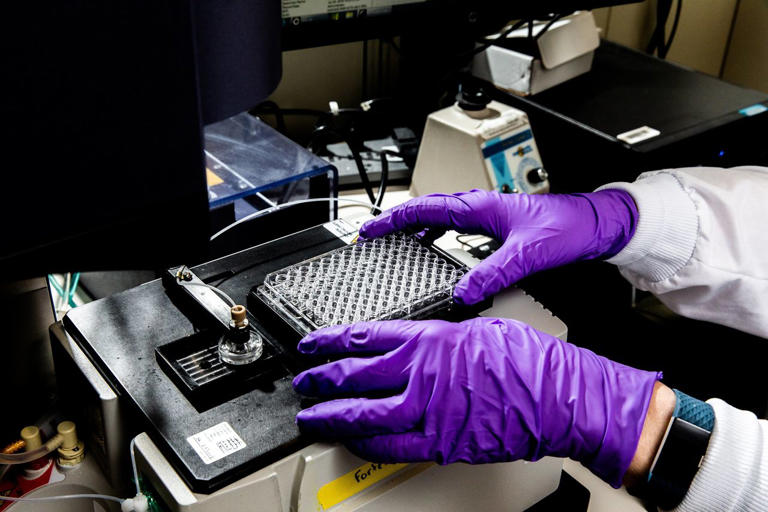The biotech industry is currently experiencing a period of cautious optimism, presenting potential opportunities for investors. After a tumultuous period marked by volatility, including a surge in 2021 followed by a subsequent crash, the sector is showing signs of recovery without yet reaching bubble territory.
Biotech stocks began rebounding in the latter half of last year, driven in part by signals from the Federal Reserve indicating a halt in interest rate hikes and potential cuts in 2024. This rebound has led to a resurgence in investor appetite for risk and has created favorable conditions for new rounds of biotech financing in the current year.
In fact, biotech companies have raised a significant amount of capital, totaling $15.5 billion in the first two months of the year, making it the best fundraising quarter in six quarters, according to Jefferies. However, while financing through initial public offerings (IPOs) has also increased, it remains below pre-crash levels, with IPO funding reaching just over $1.2 billion so far this quarter.
This dynamic suggests that the current environment may be conducive to investing in new biotech offerings. Historical data analyzed by University of Florida finance professor Jay Ritter indicates that long-term returns tend to be better when the industry is in a phase of recovery without being overheated. Specifically, IPOs tend to perform better when initial demand is moderate rather than excessively high, as excessively high demand can lead to poor performance in subsequent years.
While there may be exceptions and individual stock performances can vary widely, the first-day trading behavior of IPOs often provides insight into the long-term prospects of the biotech sector. Therefore, a period of tempered enthusiasm among investors for new biotech offerings could signal a favorable environment for long-term investment opportunities.
The historical data on biotech IPOs offers valuable insights for investors considering companies going public in the current market environment. Analysis by Jay Ritter reveals a consistent pattern: when public-market investors show high levels of enthusiasm, often reflected in significant first-day gains for IPOs, the long-term performance of these stocks tends to be poor.
For instance, during the dot-com bubble in 2000, life-science companies experienced substantial first-day gains, but ultimately delivered negative three-year returns. In contrast, in 2004 and after the 2008 crash, biotech companies saw more modest first-day gains, yet provided positive returns over the following three years. This pattern suggests that excessive investor enthusiasm during IPOs may lead to inflated valuations and ultimately disappointing long-term performance.
In 2024, the first-day returns for life-science IPOs have been relatively moderate, with an average of 9.8%. This contrasts with the higher first-day gains seen in 2021, which ultimately resulted in significant declines in the following years. The current IPO market lacks signs of excessive investor enthusiasm, indicating a more measured approach from investors.
Investors may extrapolate from this data that companies going public during periods of market thaw, when excitement levels are not excessively high, could outperform in the long run. This could be attributed to cheaper valuations post-crash and a higher bar for IPOs during these times, resulting in companies with better prospects entering the public market.
While biotech stocks are inherently binary due to the nature of clinical trials, timing also plays a crucial role in investment success. Historical trends suggest that investing during market thaws, when enthusiasm is tempered, tends to yield better outcomes for investors in the long term.
